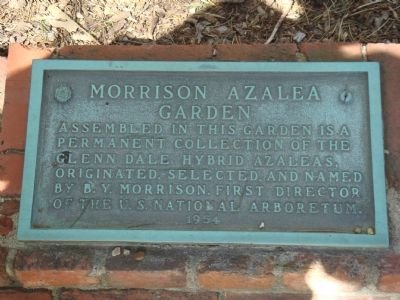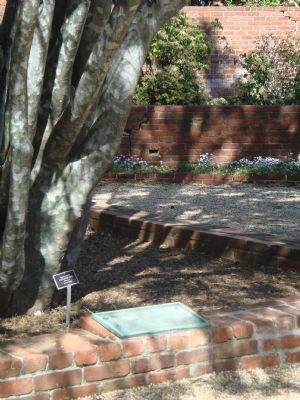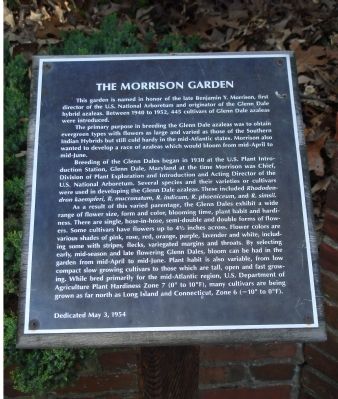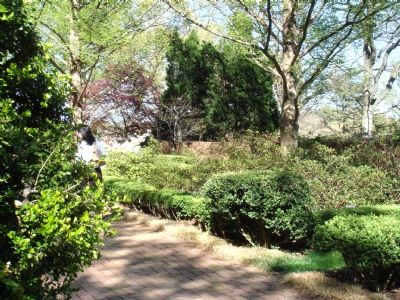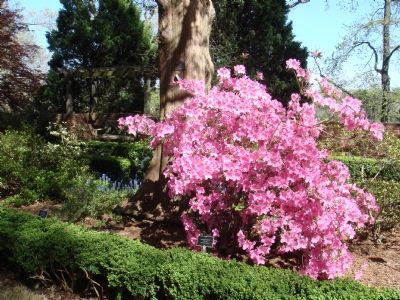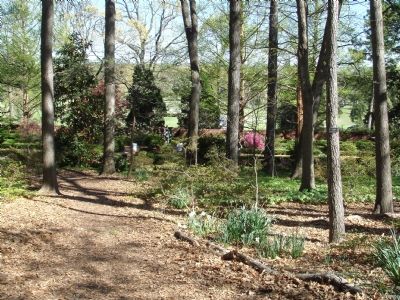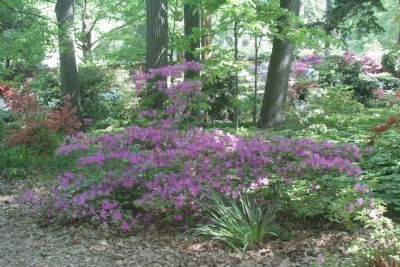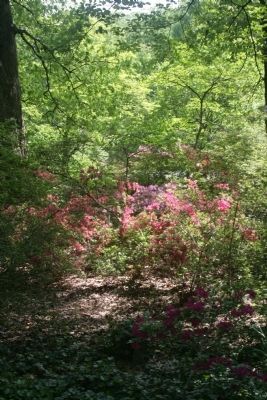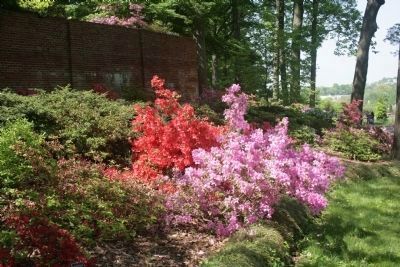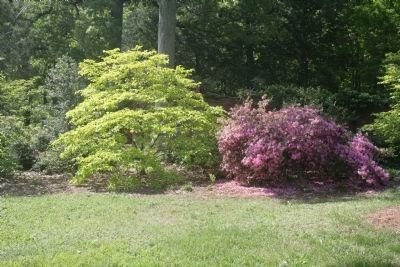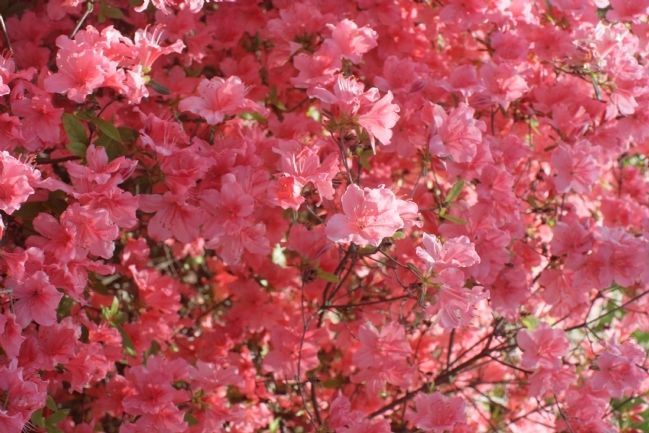Arboretum in Northeast Washington in Washington, District of Columbia — The American Northeast (Mid-Atlantic)
Morrison Azalea Garden
Erected 1954 by U.S. Department of Agriculture.
Topics. This historical marker is listed in this topic list: Horticulture & Forestry.
Location. 38° 54.512′ N, 76° 58.277′ W. Marker is in Northeast Washington in Washington, District of Columbia. It is in Arboretum. Marker can be reached from Eagle Nest Road Northeast west of Azalea Road Northeast, on the left when traveling east. Marker is in the National Arboretum, at the southwest entrance to the Morrison Garden. Touch for map. Marker is at or near this postal address: 3501 New York Avenue Northeast, Washington DC 20002, United States of America. Touch for directions.
Other nearby markers. At least 10 other markers are within walking distance of this marker. Sandstone Sculptures (about 500 feet away, measured in a direct line); Rosmarinus officinalis (approx. 0.2 miles away); Origanum vulgare (approx. 0.2 miles away); Acorus calamus (approx. 0.2 miles away); Dianthus plumarius (approx. 0.2 miles away); Mentha spp. (approx. 0.2 miles away); Dianthus caryophyllus (approx. 0.2 miles away); Valeriana officinalis (approx. 0.2 miles away); Plumeria rubra (approx. 0.2 miles away); Matthiola incana (approx. 0.2 miles away). Touch for a list and map of all markers in Northeast Washington.
Additional commentary.
1. About the Morrison Garden
(Transcription of the text in Photograph 3.) This garden is named in honor of the late Benjamin Y. Morrison, first director of the U.S. National Arboretum and originator of the Glenn Dale hybrid azaleas. Between 1940 to 1952, 445 cultivars of Glenn Dale azaleas were introduced.
The primary purpose in breeding the Glenn Dale azaleas was to obtain evergreen types with flowers as large and varied as those of the Southern Indian Hybrids but still cold hardy in the mid-Atlantic states. Morrison also wanted to develop a race of azaleas which would bloom from mid-April to mid-June.
Breeding of the Glenn Dales began in 1930 at the U.S. Plant Introduction Station, Glenn Dale, Maryland at the time Morrison was Chief, Division of Plant Exploration and Introduction and Acting Director of the U.S. National Arboretum. Several species and their varieties or cultivars were used in developing the Glenn Dale azaleas. These included Rhododendron kaempferi, R. mucronatum, R. indicurn, R. phoeniceum, and R. simsii.
As a result of this varied parentage, the Glenn Dales exhibit a wide range of flower size, form and color, blooming time, plant habit and hardiness. There are single, hose-in-hose, semi-double and double forms of flowers. Some cultivars have flowers up to 4¼ inches across. Flower colors are various shades of pink, rose, red, orange, purple, lavender and white, including some with stripes, flecks, variegated margins and throats. By selecting early, mid-season and late flowering Glenn Dales, bloom can be had in the garden from mid-April to mid-June. Plant habit is also variable, from low compact slow growing cultivars to those which are tall, open and fast growing. While bred primarily for the mid-Atlantic region, U.S. Department of Agriculture Plant Hardiness Zone 7 (0° to 10°F), many cultivars are being grown as far north as Long Island and Connecticut, Zone 6 (-10° to 0° F).
Dedicated May 3, 1954.
— Submitted April 22, 2007, by J. J. Prats of Powell, Ohio.
Credits. This page was last revised on January 30, 2023. It was originally submitted on April 22, 2007, by J. J. Prats of Powell, Ohio. This page has been viewed 3,990 times since then and 36 times this year. Photos: 1, 2, 3, 4, 5, 6. submitted on April 22, 2007, by J. J. Prats of Powell, Ohio. 7, 8, 9, 10, 11, 12, 13. submitted on May 5, 2008, by Tom Fuchs of Greenbelt, Maryland.
